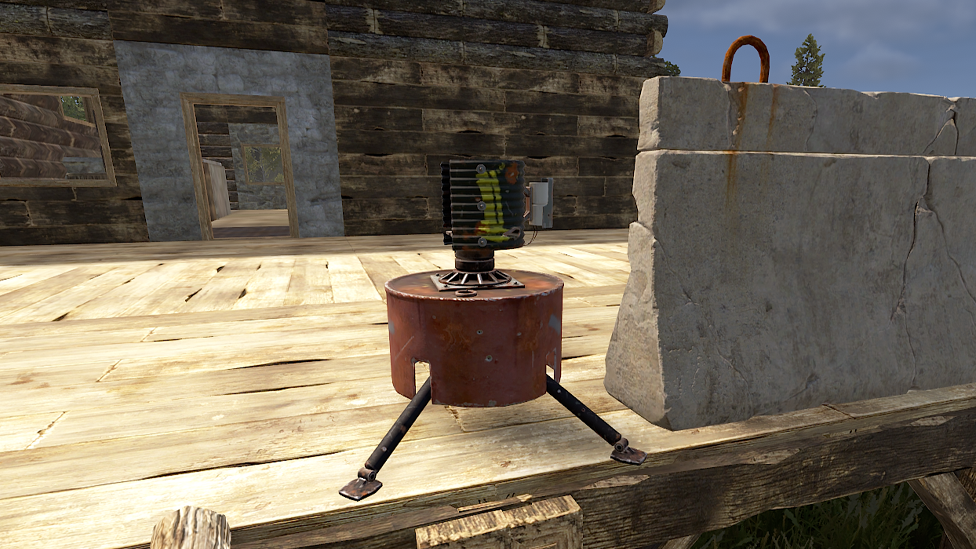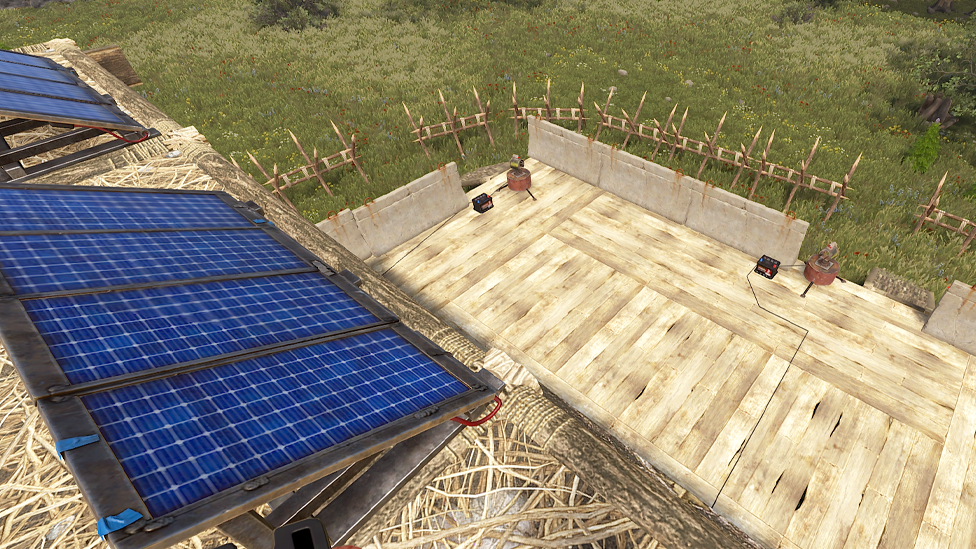How To Setup Auto Turrets In Rust
If you've ever felt the panic of leaving your base unprotected in Rust, auto turret rust is about to become your new best friend. Whether you're offline, out farming, or too busy defending on another front, this rust turret setup is the ultimate guardians for your base. Let’s check out the step-by-step process of setting up an auto turret rust like a pro. Trust us, your enemies won’t see it coming.
Why You Need Auto Turrets

Make Your Own Rust Server
The rust auto turret isn’t just a luxury—they’re a necessity. Here’s what they bring to the table:
- Protection when you’re offline
- Extra firepower during raids
- A trusty shield against counter-raiders
- A little peace of mind (because who doesn’t need that in Rust?) If you are wondering how to set up turrets in rust, they aren’t as simple as they used to be. No more plopping them down and forgetting about them. Now, they require careful setup with weapons, ammo, and a power source. Let’s get you started.
Getting the Blueprint
Before you can craft an auto rust turret, you need the blueprint. Here are your options:
Buy It at the Outpost
- Cost: 400 scrap for the turret, 500 scrap to research it.
- Safest and fastest method if you can scrape together 900 scrap.
- Bonus tip: Research the blueprint on-site to save time.
Supply Drops
- 40% chance of finding a turret in a supply drop.
- Be warned: supply drops are hot zones for player PvP, so gear up!
Crates and Scientists
- Locked crates, oil rig crates, elite crates, and military crates all have a small chance of containing turrets.
- Scientists? Eh, a measly 0.1% chance. Don’t count on it.
4. Player Trading
- Keep an eye out for player-run shops or barter in the chat. Scrap or base components are good bargaining chips.
Gathering Materials
To craft an auto rust turret, you’ll need:
- Targeting Computer: Found in crates or dropped by APC Bradley.
- CCTV Camera: Similar sources as targeting computers.
- 10 High-Quality Metal: Mine metal nodes or recycle spare components.
Crafting and Placement
Crafting
- Use a Level 2 Work Bench to craft your rust turret once you’ve got the materials.
Placement

Placement is everything! While it’s tempting to slap a turret outside your base, the real value comes from strategic positioning.
- Best Spots: Funnel enemies into chokepoints or guard key entryways.
- Turrets fire in a 45-degree arc, so ensure their field of view covers your desired area.
- Use flat surfaces for placement. Pro Tip: Assign turret permissions to your teammates before powering it on. To do this, have them approach the turret and press E. Want to reset permissions? Hold E to access the options wheel and delist everyone (don’t forget to re-add yourself!).
Choosing a Weapon
Now that you know how to set up auto turret rust, your turret needs a weapon. No freebies here—you’ll have to provide one.
- Weapon Choices: Pick based on the turret’s role (e.g., long-range rifles for open areas, shotguns for tight corridors).
- Regardless of the weapon, turrets detect enemies within 25-30 meters.
Powering the Turret
Your rust auto turret electricity setup requires 10 electricity to operate. Here’s how to keep them powered:
- Power Sources: Small batteries, solar panels, wind turbines, or generators.
- Smart Triggers: Use triggers to activate the turret only when enemies are nearby. This saves power and keeps your setup efficient. Advanced Tip: You can link your turret to switches or smart components to monitor its status remotely. For example, set up lights that activate when the turret is out of ammo.
Reloading and Repairing
Reloading
- Depower the turret first. It’ll retract, letting you reload or change ammo.
- Fill it with the appropriate ammunition for your chosen weapon.
- Switch between aggressive mode (fire at anyone) and peacekeeping mode (fire only at PvP players) as needed.
Repairing
- Use a hammer and high-quality metal for quick fixes.
- For more extensive repairs, head to a repair bench with extra targeting computers and CCTV cameras.
Pairing with the Rust App
Gone are the days of babysitting your base 24/7. Pair your turret with the Rust+ app to control it remotely.
- Hook the turret to a smart power source.
- Name the turret for easy identification.
- Control it via your smartphone, tablet, or browser.
Tips for Optimal Auto Turret Use

- Experiment with turret placement and weapon combos.
- Use turrets for both defense and offense (e.g., covering your retreat during a raid).
- Don’t forget to maintain your power sources to avoid downtime.
Your Trusted Game Server Hosting With Scalacube
Want to survive and thrive in Rust? Consider reliable Rust server hosting. With Scalacube, setting up your own server is quick and easy. Whether you’re playing solo or with friends, you’ll get smooth performance, mod support, and 24/7 uptime—all at a reasonable cost. You can even customize your world, manage your rust settings, and focus on the fun without the need for technical skills. Scalacube makes hosting simple, so you can spend more time building, battling, and surviving in Rust’s challenging world.
Wrapping Up
With a little effort and strategy, auto turrets can become your base’s ultimate guardians in Rust. Whether it’s mowing down raiders with a high-powered rifle or holding the line with a shotgun, turrets give you the upper hand when you’re offline or overwhelmed. Thus, what are you waiting for? Gather those materials, craft some turrets, and make your enemies think twice before messing with your base.
FAQs
Do turrets in Rust need power?
Yes, it needs 10 power. The Auto Turret is a turret that automatically detects and engages targets with bullet fire. It is designed for base defense but can be used for other reasons.
Are turrets limited in Rust?
There is no hard limit to the amount of turrets you can use; but, there is a restriction to the number of turrets that can be activated at the same moment within 40m.
Do shotgun traps need power in Rust?
Shotgun traps and flame turrets do not require power, so you can install them to your base without having to worry about wiring them. After placing the traps, they will require ammunition/fuel. Shotgun traps simply use homemade shells, which are quite inexpensive to make.
Make Your Own Rust Server
Copyright 2019-2025 © ScalaCube - All Rights Reserved.